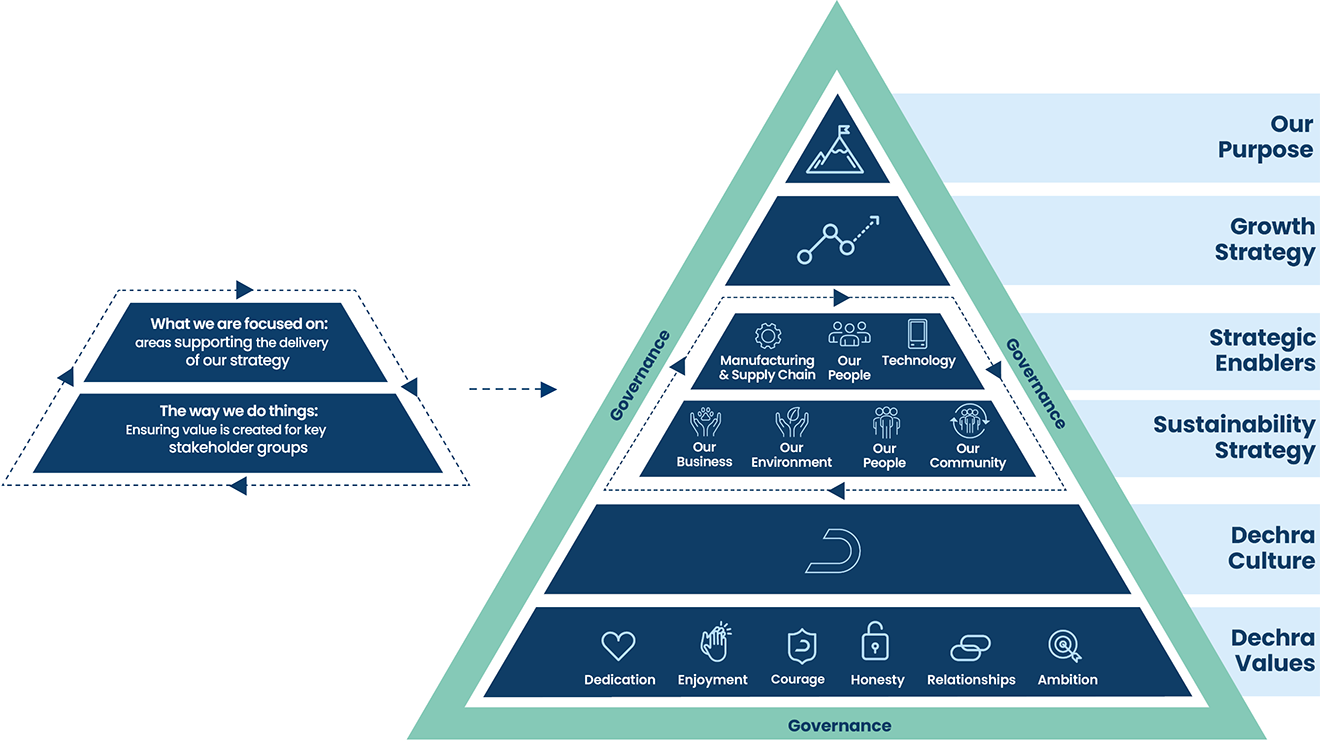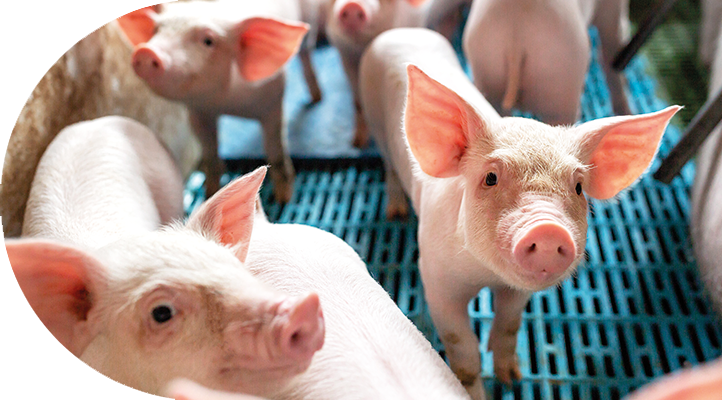Sustainability Report 2023
Introduction
Sustainability is Embedded in Our Strategy

“Sustainability is firmly embedded in the DNA of the Dechra business and is seen as crucial to delivering our growth strategy.”
Carina Kjellberg
Group Sustainability Director
How We Make a Difference
Our Purpose, the sustainable improvement of animal health and wellbeing globally, has not changed and nor has our growth strategy. We continue to have a clearly defined set of Drivers and Enablers that support delivery of that strategy and which we remain focused on.
Our Making a Difference Sustainability strategy reflects the way in which we go about delivering that growth strategy. It is closely aligned with our Values and Culture, sits firmly at the heart of all that we do, and helps position Dechra as an even better business capable of delivering long term value to all stakeholders.

Alignment to UN Sustainable Development Goals
Since 2020, we have chosen to link our sustainability strategy to the United Nations Sustainable Development Goals (SDGs) as we felt that this would provide an appropriate framework for our activities. When plotting the 17 goals against our Sustainability objectives, we found that we have the opportunity to positively contribute to a number of them but identified the following as being most closely aligned to our Making a Difference strategy.
Our global THRIVE programme supports positive physical, emotional, social and financial wellbeing.
Alignment to sustainability strategic pillars:
We are proud to have retained our status as a Living Wage (or equivalent) employer globally.
Alignment to sustainability strategic pillars:
We are also committed to reducing the gender pay gap in our business.
Alignment to sustainability strategic pillars:
We are committed to minimising the impact of our operations, helping to create a more resilient business and protect the environment.
Alignment to sustainability strategic pillars:
We have submitted ambitious near term carbon emission reduction targets to the SBTi and are developing a roadmap to achieve net zero emissions by 2050.
Alignment to sustainability strategic pillars:
Key to Sustainability Strategic Pillars
Task Force on Climate-related Financial Disclosures
Our Response to Climate Change
We welcome the opportunity to be transparent about what we consider to be the risks and opportunities arising from climate change and how we plan to respond to those factors to create a more resilient business.
Full details about our approach to climate change can be found in the Task Force on Climate-related Disclosures (TCFD) section within our 2023 Annual Report, but we have summarised below the key conclusions resulting from the four themes within the TCFD recommendations.
Governance
- The Dechra Board is accountable for approving our Sustainability strategy and overseeing the delivery of our climate-related objectives
- Executive responsibility belongs to the Chief Financial Officer with support from the Group Sustainability Director
- The Senior Executive Team (SET) is responsible for delivering on these objectives within their functional areas and business units
- Factors relevant to managing climate risk are specifically included in the bonus objectives of each Executive Director and SET member
Strategy
-
We have assessed the potential impact of climate change over a 30 year time horizon under two scenarios:
- 1.5°C temperature rise
- 4°C temperature rise
- Our Making a Difference plan has been developed and is designed to help us transition to a low carbon business
- Our near term greenhouse gas (GHG) emission reduction targets have been submitted to the Science Based Targets initiative (SBTi) and are currently being validated
- We are also supporters of the UN backed Race to Zero campaign
Risks and Opportunities
-
Following an extensive review of the possible impact of climate change on the Group’s business model, we have identified four key risks and one opportunity:
- one physical risk resulting from the increased frequency of extreme weather and climate-related natural disasters
- three transition risks relating to carbon pricing and future environmental taxation, the supply-demand of renewable energy and the change in raw material or sourcing cost
- a possible opportunity from the increase in demand for low carbon products
Metrics and Targets
- We report our Scope 1, 2 and 3 GHG emissions in the 2023 Annual Report
-
We have six climate-related targets as follows:
- Reduce Scope 1, 2 and 3 GHG emissions in line with climate science through the SBTi
- Achieve net zero by 2050
- Eliminate the remaining 34% of suppliers who are non-FSC approved by June 2024
- Zero waste to landfill by 2025
- Transition to electric vehicles by June 2027
- Complete the AUD$6 million investment in AgCoTch by June 2024

